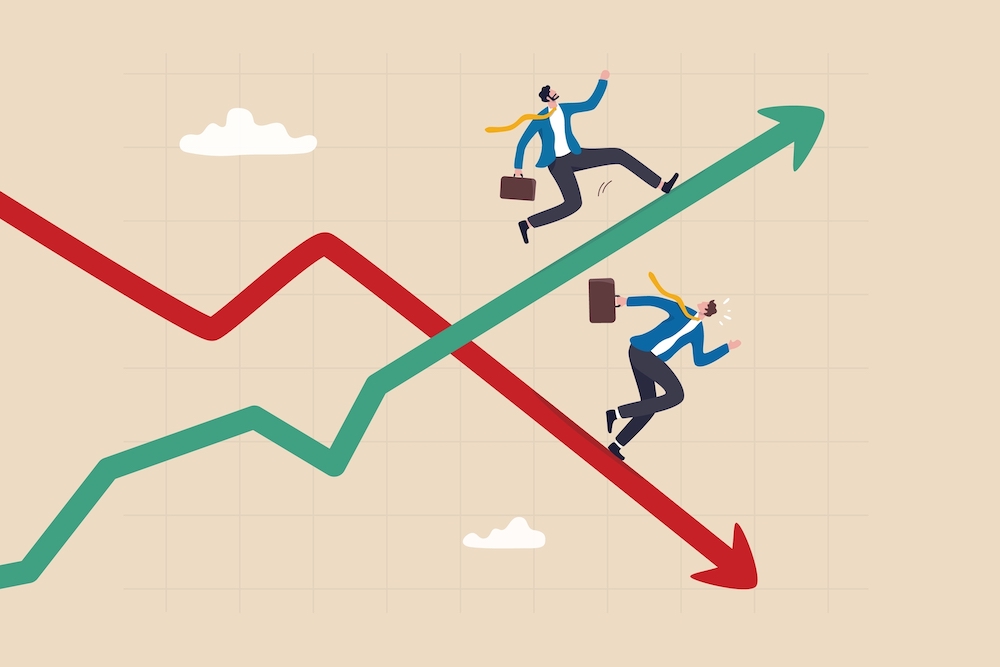Stay in the market.
That’s the advice I had for readers last week. More specifically, I said this…
My advice: Stay in the market (unless you need the money in the next three years), but avoid overweighting the riskiest stocks (meme stocks, FAANG stocks, Nasdaq-100 stocks, etc.).
Today I want to expand on that a bit and make it clear why, in the long term, the stock market is your best friend.
I’ll also go into exactly why you shouldn’t try to time the market.
And as usual, I’ll rely on great data and charts to illustrate these points.
First, here’s a chart that speaks volumes about the stock market’s potential. It was compiled by the guys at the blog A Wealth of Common Sense.

So what are we looking at here?
Well, for each year shown, this chart indicates the average annual return in the 30 years leading up to that year. For example, if you look at the year 2000, you’ll see the line is right around 14%. That’s what your average annual return would have been if you had at that point been invested in the S&P 500 for 30 years – since 1970.
The worst 30-year period displayed on the chart is from 1929 to 1959. That’s because you would have started buying stocks at the peak of the roaring ’20s and then endured the awful market of the 1930s.
Still, you would have come out ahead, with an annual return of just below 8%. And your total return over that 30-year period – despite the Great Crash of 1929 – would still have been 850%.
A Relentless Upward Climb
The larger point of this chart is that the stock market has produced truly impressive returns for every 30-year period since 1926. No matter what happened – a world war, market crashes, mild and severe recessions, the runaway inflation of the 1970s – the market performed well over 30 years.
That’s the power of the stock market. Nothing seems to be able to divert it from its relentless long-term upward climb.
Of course, in the shorter term you absolutely could do worse, depending on when you started investing and when you took your money out. But even every 20-year return since 1926 is still positive.
As for 10-year returns during this period, only twice did they dip below zero. One of those was in the 1930s, because the Great Crash pushed the market down 89%. The other was the period from the dot-com bubble burst in March 2000 to early 2010 (a period that included the global financial crisis).
Bottom line: The stock market is volatile in the short term but delivers strong returns in the longer term.
No Time for Timing
Of course, you may wonder how these results would improve if you tried to time the market rather than just holding through every market dip.
Indeed, it would be awesome to have the ability to accurately predict market tops (when you would get out of stocks) and bottoms (when you would get back in)!
By doing so you could avoid bear markets and take advantage of bull markets – and really juice your returns.
There are two problems with this strategy, however. First, predicting tops and bottoms – even approximately – is nearly impossible.
But even if you had a crystal ball and were able to approximately forecast when market tops and bottoms were coming, you would still underperform a buy-and-hold strategy.
The chart below, courtesy of ClearBridge Investments, shows the very long-term return of $100 invested in 1936. And it shows how that $100 would have performed using a buy-and-hold strategy compared with a market-timing strategy.
The return on market timing assumes you sold 10 months before a peak and bought back 10 months after a trough.
As you can see, even having a crystal ball would have failed you.

How is that possible?
It’s because solid long-term returns are highly dependent on being in the market on the best days – when the market is up, say, 5% or more.
Missing those days by being out of the market completely drastically reduces your long-term returns.
Investors who missed the 10 best days in any given decade since 1930 would have seen 65% lower returns over the decade. This is compared with those who just bought and held, on average, according to ClearBridge.
And here’s the second problem with trying to time the market…
Nearly a third of the market’s best days come very close to when it turns from bear to bull. So you would have to predict market bottoms with pinpoint accuracy every time.
So there you have it. Despite short-term volatility, the stock market always goes up in the long term. And it doesn’t pay to try to time the market – even if you could approximate its peaks and troughs.
So my advice is the same: Stay in the market for the long term and reap the rewards.
